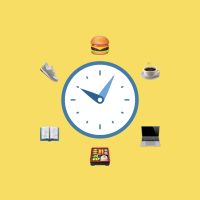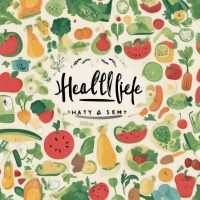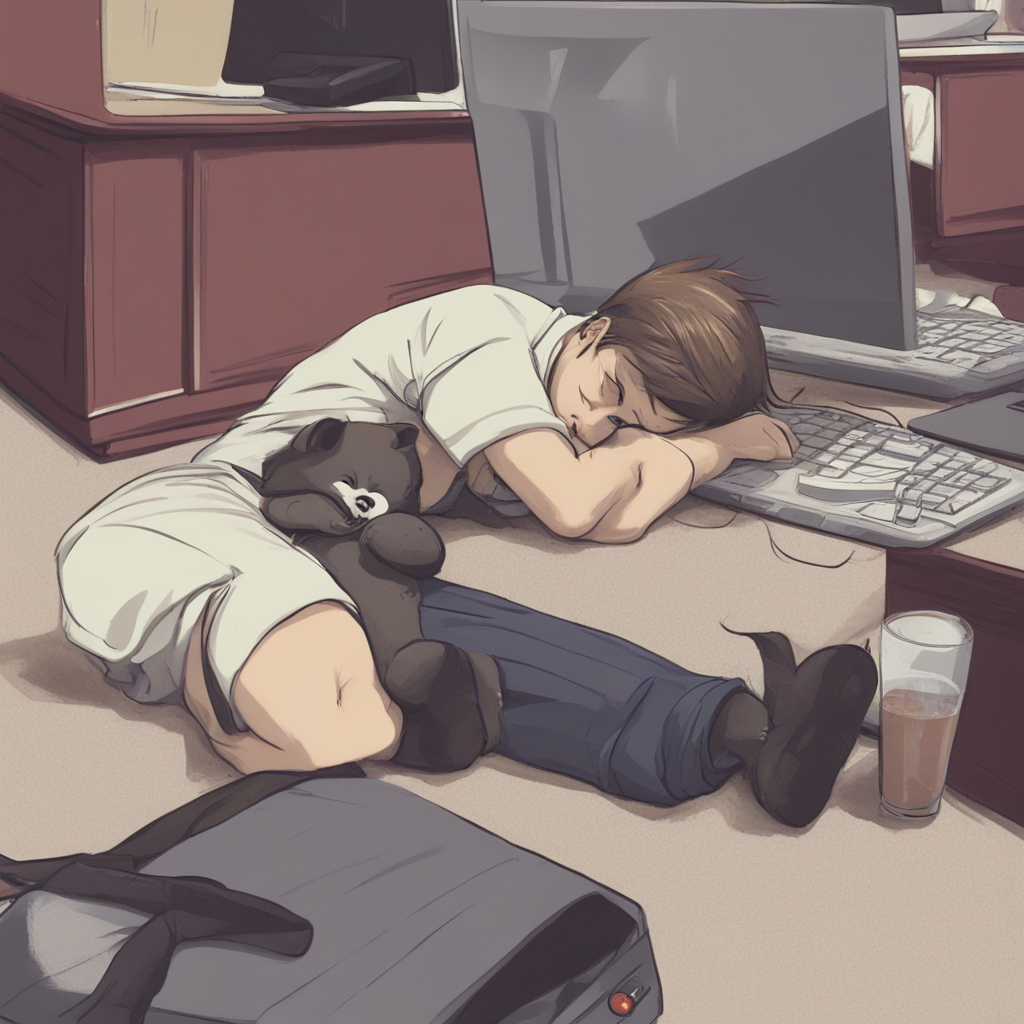What is Substance Abuse
Substance abuse is a pervasive issue that encompasses the repetitive and harmful usage of drugs, alcohol or other harmful substances. This behavior pattern can lead to a cascade of consequences that impedes normal functioning and sets a dangerous precedent for health and well-being. This might be due to a variety of reasons, ranging from peer-pressure to psychological distress or to simply trying to escape the harsh realities of life.
Moreover, it is not just illicit substances like heroin or methamphetamine that fall under this umbrella. Even the misuse of prescription drugs or over-the-counter substances can pose serious health risks and lead to substance abuse disorders. The growing prevalence of these disorders underlines the imperative need for awareness, education, and early intervention strategies for substance abuse.
The Harsh Realities: Substance Abuse Risks for Teens
Substance abuse is a scourge that strikes without bias, and unfortunately, teenagers are not immune to it. Adolescence, a transitional phase marked by significant hormonal and physical changes, is equally characterized by a compelling urge to experiment and navigate new horizons. This exploratory drive often predisposes teenagers to risky behavior, substance abuse featuring prominently within.
Research points out a disturbing correlation between the onset of drug use and an early age. Data from the National Survey on Drug Use and Health (NSDUH) suggest that teenagers who start using drugs are more likely to struggle with substance dependence in adulthood. The consequences are far-reaching and not limited to health alone; they have the potential to severely inhibit a teenager’s academic and personal development. This grim reality underscores the impetus to tread cautiously and to recognize and intervene when a teenager is at risk of substance abuse.
Sudden drop in grades or lack of interest in hobbies
A noticeable decline in academic performance or a marked decrease in enthusiasm for hobbies that once brought joy can be telltale signs of adolescent substance abuse. Grades can plummet as teens find it increasingly challenging to focus, keep up with assignments or maintain their usual study routine as a result of drug or alcohol use. Schools may also notice frequent absences, lateness, or disciplinary issues cropping up. Notably, these changes can stem from other issues as well, such as mental health struggles, making it vital to approach the matter delicately.
In the same vein, if teenagers suddenly become disinterested or apathetic towards activities they once loved, this might indicate they’re grappling with substance use problems. Participating in team sports, playing a musical instrument, painting, reading or other similar hobbies require concentration, commitment and time, all of which can be compromised by substance use. Parents and caregivers need to pay close attention to these shifts in behavior and attitude, balancing their concern with understanding and support. It is crucial not to jump to conclusions based solely on these observable changes.
Secretive behavior and lying
Behaviors that deviate from the norm may indicate a teenager’s involvement in substance abuse. Principally, if a once open and communicative teen suddenly becomes inscrutable, excessively private, or outright dishonest, this could potentially be a sign of drug use. Some common manifestations of this could include locking doors, quickly changing screens on their devices when you walk by, hiding objects or belongings, and consistently lying about their whereabouts.
Relationships among friends and families can be eroded by dishonesty, and it carries a compounding hurt when the deception is tied to substance abuse. When the trust underpinning the relationship is shattered, it makes it harder to extend help and support, which are crucial in helping them overcome such detrimental habits. Constant lying and dishonesty not only strain the relationship but also contribute further to the isolation that often accompanies substance misuse. Therefore, understanding the linkage between secretive behavior, lying, and substance abuse is vital for parents and caregivers.
Spending time with new friends who use substances
One prevalent attribute of disturbed teenage behavior is the sudden shift to new friend circles, often attracted by the curiosity of engaging in adventurous yet risky activities like substance use. It is a matter of grave concern if your young one starts to spend a disproportionate amount of time with these new acquaintances. It is during these unsupervised gatherings, under peer pressure, that they involve themselves in substance abuse unknowingly, picking up habits harmful to their health and overall wellbeing.
Parents and guardians need to vigilantly observe such shifts. Make efforts to know who their company is, without violating their trust or being excessively snoopy. It’s about maintaining a balance between respect for their privacy and securing their future. Awareness of their social circle allows parents to guide them discreetly, educating about the risks associated with drug abuse, and possibly steer them away from the path. Remember, it is not about setting restrictions but opening channels of communication, foster understanding, and nurture their right to decision-making while being aware.
Money or valuables disappearing from the home
Often, teens who are involved with substance abuse resort to dishonesty in order to sustain their habit. This dishonesty often manifests as money or other valuables inexplicably missing from the home. It may start subtly, with small amounts of money being suddenly unavailable, followed by more significant amounts going missing. Such disappearances may be accompanied by unlikely explanations or denial, both common markers of substance abuse-induced deceit.
Additionally, not just money, but also valuable items from the home may start disappearing, pawned or sold off to obtain funds for substances. Teens might sell personal items initially, but as the addiction grows, nothing in the house can be considered safe. From jewelry to electronics, the thought of any item being potential substance money can create an environment of mistrust and fear. Hence, it becomes crucial to discern these signs early, enabling immediate intervention and support.
Tip 1: Monitor them closely.
Monitoring one’s child closely signifies paying attention to their habits, their friends, their hobbies, and their general disposition. With the growth spurt of adolescence, often the responsibilities and liberty both shoot up concurrently. While it’s essential to respect their budding individuality, it’s equally crucial to stay alert of their activities, without infringing on their private space.
The term “monitor” here doesn’t mean that a parent should turn into a watchful hawk, rather it implies keeping an open, non-judgemental mind, and creating a responsible framework where children feel comfortable talking about their daily routine. Parents can monitor their children by staying updated about their friends and their engagements, thus providing them an environment where they feel loved, heard and safe. Regularly staying in touch with their teachers and instructors and following their academic progress can further aid in keeping a close watch. A sudden significant drop in grades or lack of interest in hobbies, for instance, could be a red flag indicative of substance involvement.
Tip 2: Build trust and talk openly
Building trust within the family structure is an essential, yet often overlooked, step in preventing substance abuse among teenagers. Trust starts with an open and constructive dialogue regarding the real and potential consequences of substance misuse. By engaging your teenager in candid conversations about drugs and alcohol, you encourage them to think critically about these matters. Ensuring that these conversations are fact-based and non-judgemental helps your teen feel comfortable discussing their thoughts, questions, or concerns with you.
Open communication bolsters trust between parents and teenagers. Avoid blaming or shaming, which can lead to your teen closing off. Keep lines of communication open even when it’s hard, especially when it’s hard. Adolescents are more likely to make safer choices when they feel they can speak freely about their lives without fear of harsh judgments or punishment. The safety net of trust and open dialogue can often steer teenagers clear from the pitfalls of substance abuse.
Tip 3: Set clear rules and expectations
Setting clear rules and expectations is an essential step in guiding teens away from substance abuse. This involves clearly conveying to your teenager what behavior is acceptable and what is not in a firm but understanding manner. Patience and openness in these conversations will ensure that your teen feels they can approach you with their concerns without feeling threatened. Make sure to clarify that these rules are non-negotiable and are there for their own safety and well-being.
Clarify the consequences that will follow if these rules are not adhered to. Consequences should be consistent, predictable, and enforceable. This gives your teen a clear idea of the repercussions of their actions while reinforcing that rules and boundaries are in place for their protection. Avoid punishments that are unreasonably harsh or devoid of any evident connection to the broken rules. This approach will aid in establishing respect and understanding between you and your teen.
Tip 4: Know the warning signs
Understanding the warning signs is critical in combating substance use in teens. It’s not unusual for teenagers to exhibit mood swings, spend a large portion of their day sleeping, or show a dip in academic performance. However, when these behavioral changes are coupled with secretive behavior, reclusiveness, or drastic changes in physical appearance, these might be red flags of a deeper issue – substance abuse.
Avoiding confrontation or jumping to conclusions is important. Instead, calmly approach your teenager if you notice these signs and engage them in a non-confrontational conversation, expressing your concerns. Immediate recognition of these signals, combined with appropriate intervention, can stave off more severe consequences. Always remember it’s better to overreact than overlook potential issues.
Tip 5: Limit unsupervised time
The magnitude of peer influence during the adolescent years cannot be underestimated. This is a period of life when young individuals seek to establish their identities, often by distancing themselves from parents and aligning themselves with their peers. Therefore, one powerful strategy to deter substance use is to limit the amount of unsupervised time during which teens are prone to succumb to peer pressure. Keeping their schedule occupied with constructive activities such as sports, arts, or academic clubs can help distract teens from the temptation of substance abuse.
On the other hand, it’s important to strike a balance between supervision and granting them a sense of personal space. Too much supervision may lead to resentment and rebellion. A valuable approach would be to subtly keep tabs on their activities through regular communication about their experiences and daily life. It promotes transparency and reduces unsupervised time, limiting the opportunities for an initial encounter with substance abuse.
Tip 6: Encourage positive activities
Keeping teens busy with positive activities is a proactive strategy in preventing substance abuse. Whether it’s involvement in community service, clubs, sports teams, or artistic endeavors like painting or learning a musical instrument, these pursuits provide a healthy outlet for emotions, stress, and creative impulses. When adolescents are constructively engaged, they have less time to be bored or be influenced by negative peer pressure. Furthermore, these activities not only hone skills but also build self-esteem and a sense of achievement.
Simultaneously, parents should center family activities that all members can enjoy together, thereby fostering an environment of love, understanding, and bonding. This could be as simple as weekend board games, cooking together, evening strolls, or customized according to the unique interests of your family. By sharing fun, enjoyable experiences, you create an inherent diversion from harmful influences like substance use and abuse. Also, remember to appreciate your teen’s efforts and triumphs, as positive reinforcement plays a crucial part in encouraging them to continue with these positive activities.
Tip 7: Monitor for risk factors
Monitoring for risk factors is an essential measure towards detecting substance abuse among teens. Risk factors shed light on the triggers that make individuals more susceptible to substance abuse. These might include an array of elements such as mental health issues, family history of substance abuse, academic struggles, or a lack of parental supervision. By keeping a close eye on these risk factors, you can discern potential red flags before they progress into an uncontrollable situation.
From a proactive standpoint, acquainting yourself with your teen’s daily routines, their circle of friends, and their stress levels can unveil hidden risks. Changes in routine, hanging out with a new group of friends, or heightened stress levels are indicators worth your attention. Having open and honest communication can allow your teenager to openly share their struggles, and help them realize that turning to substances is not a viable solution to their issues. Through mindful monitoring of these risk factors, you can potentially nip substance abuse in the bud.
Tip 8: Educate yourself and your teen
It’s imperative to educate both yourself and your teenager about the serious consequences of substance abuse and misuse. This includes not only the immediate physical effects such as dizziness, nausea, or even overdose but also the long-term consequences that tend to be much bleaker. These may encompass chronic illnesses, psychological disorders, or dependency issues.
Equipping yourself with this knowledge makes it easier for you to have open and honest conversations with your teenager about the dangers of substance abuse. Remember, teenagers are more likely to listen when they feel you understand the topic at hand. By providing them with clear, factual information, you can debunk any myths they may have come across and deter them from experimenting with risky behaviors.
Tip 9: Lead by example
A strong method of prevention, often underestimated, is leading by example. Teenagers are often more watchful of parental behavior than we might believe. Adolescents are highly impressionable and they intuitively copy behaviors exhibited by respected or authoritative figures in their lives. If substance abuse is normalized or even endorsed in their home environment, they’re more likely to partake in similar activities.
Conversely, if a teen witnesses their guardians demonstrating healthy coping mechanisms and abstaining from substance misuse, they are more likely to follow the same path. Demonstrating positive behavior plays a critical role in molding their perspectives on substance use. Essentially, parents and caregivers are walking, talking guidebooks, indirectly teaching their teens how to navigate through the world every single day.
Tip 10: Get professional help if needed
If you’ve taken all the steps mentioned and are still suspicious of your teen’s behavior, it might be time to get professional help. Therapists, counselors, and other mental health professionals are highly skilled in helping teens (and their families) deal with substance abuse issues. They can offer essential guidance, coping strategies, and treatment plans tailored to your situation, ensuring your teen gets the proper care they need.
Remember, seeking professional help doesn’t mean you’ve failed as a parent. On the contrary, it signifies your dedication and committed approach to safeguarding your child’s future. It can be a decisive step in their journey of recovery and can provide them with the tools they need to lead a healthier, substance-free life. Always stay supportive and patient throughout the process, as overcoming substance abuse is a long-term commitment, not a quick fix.






























